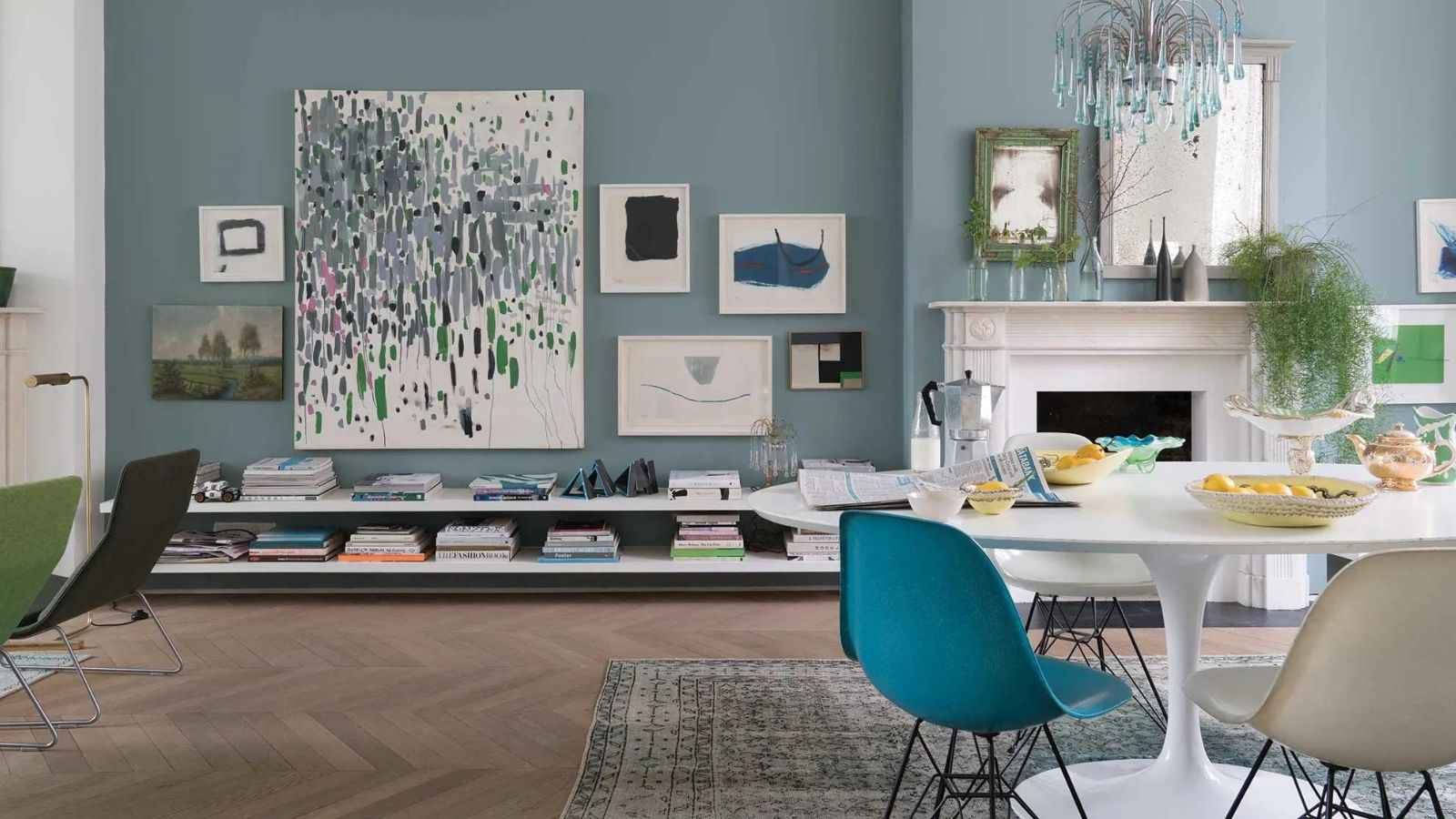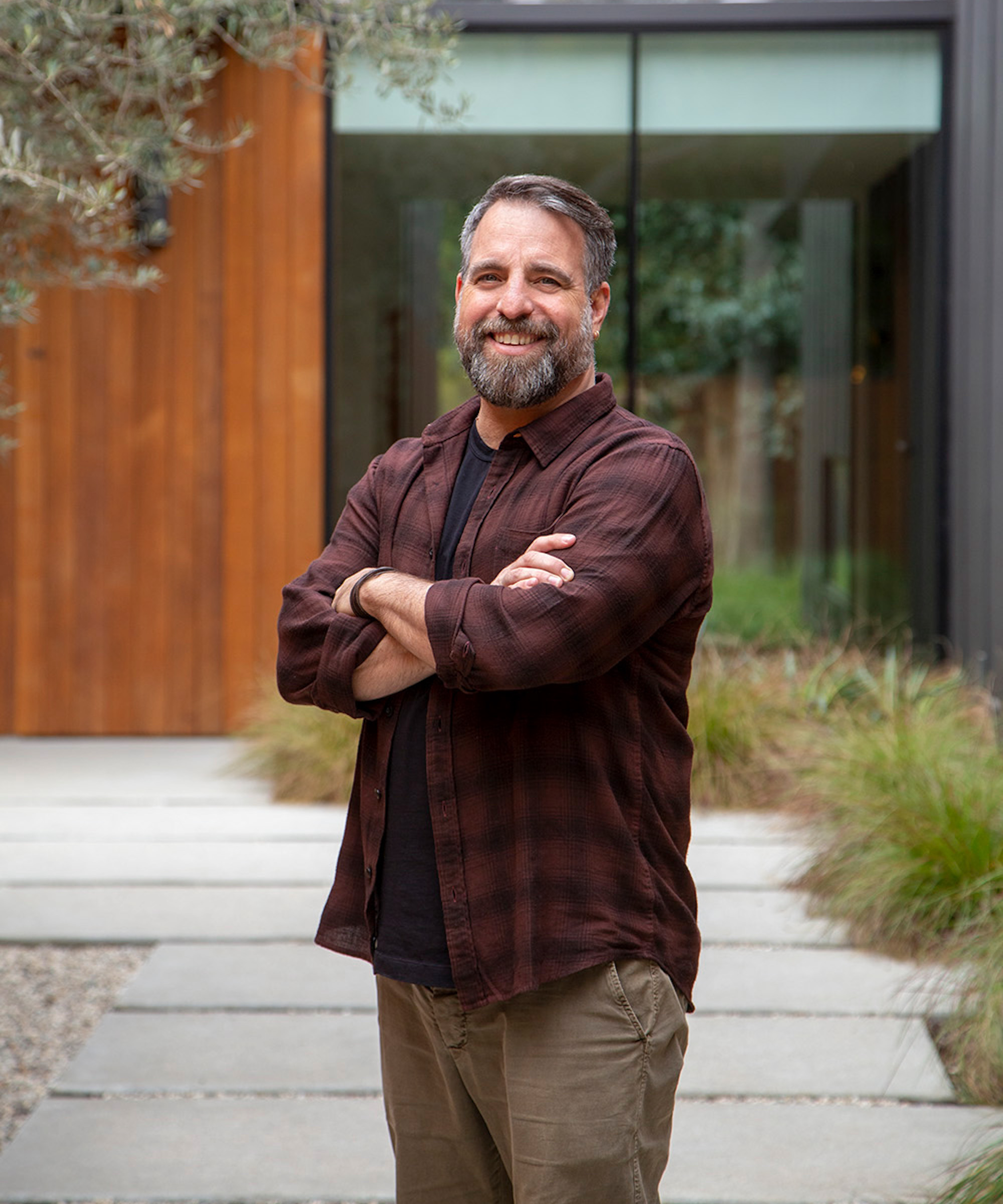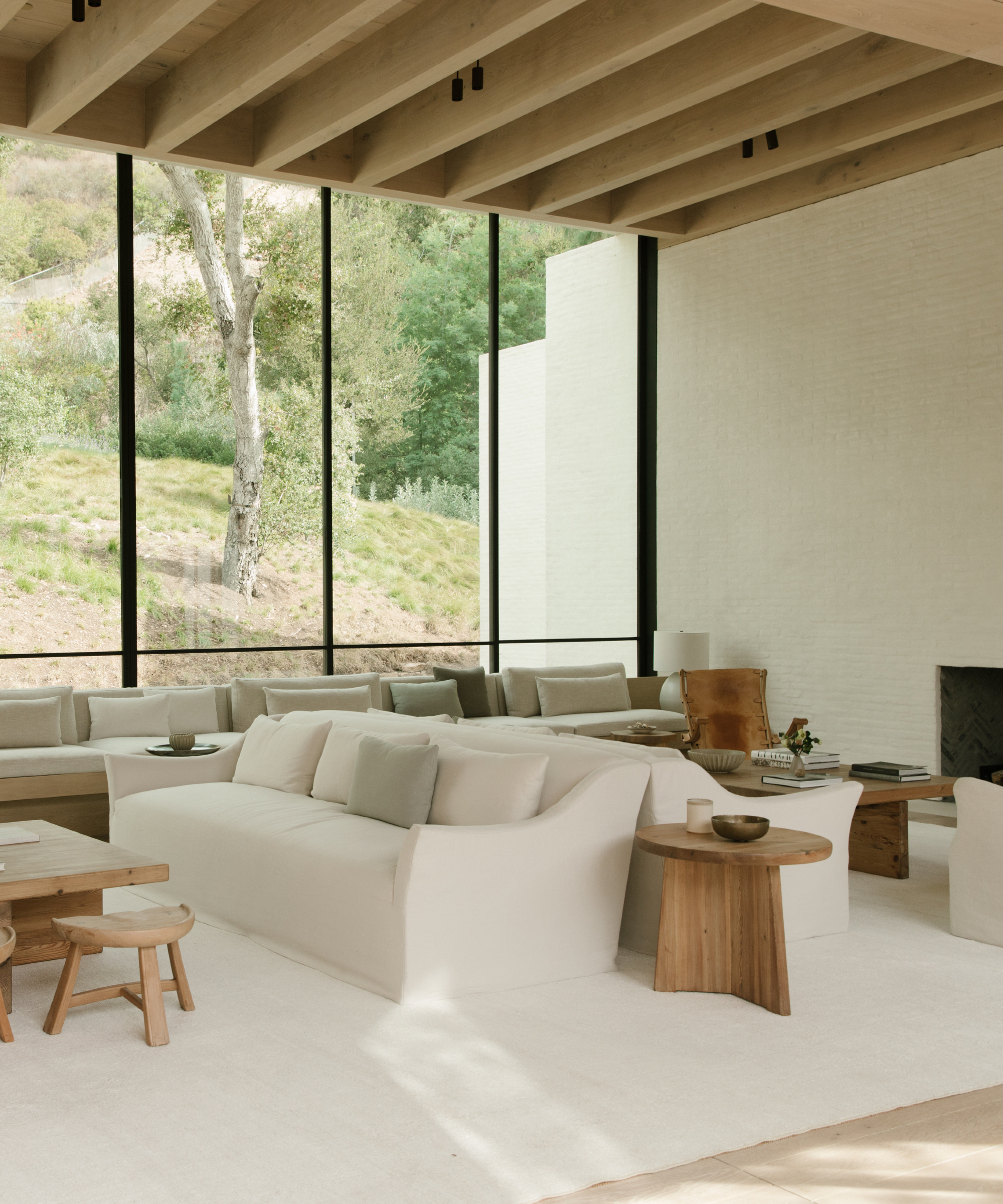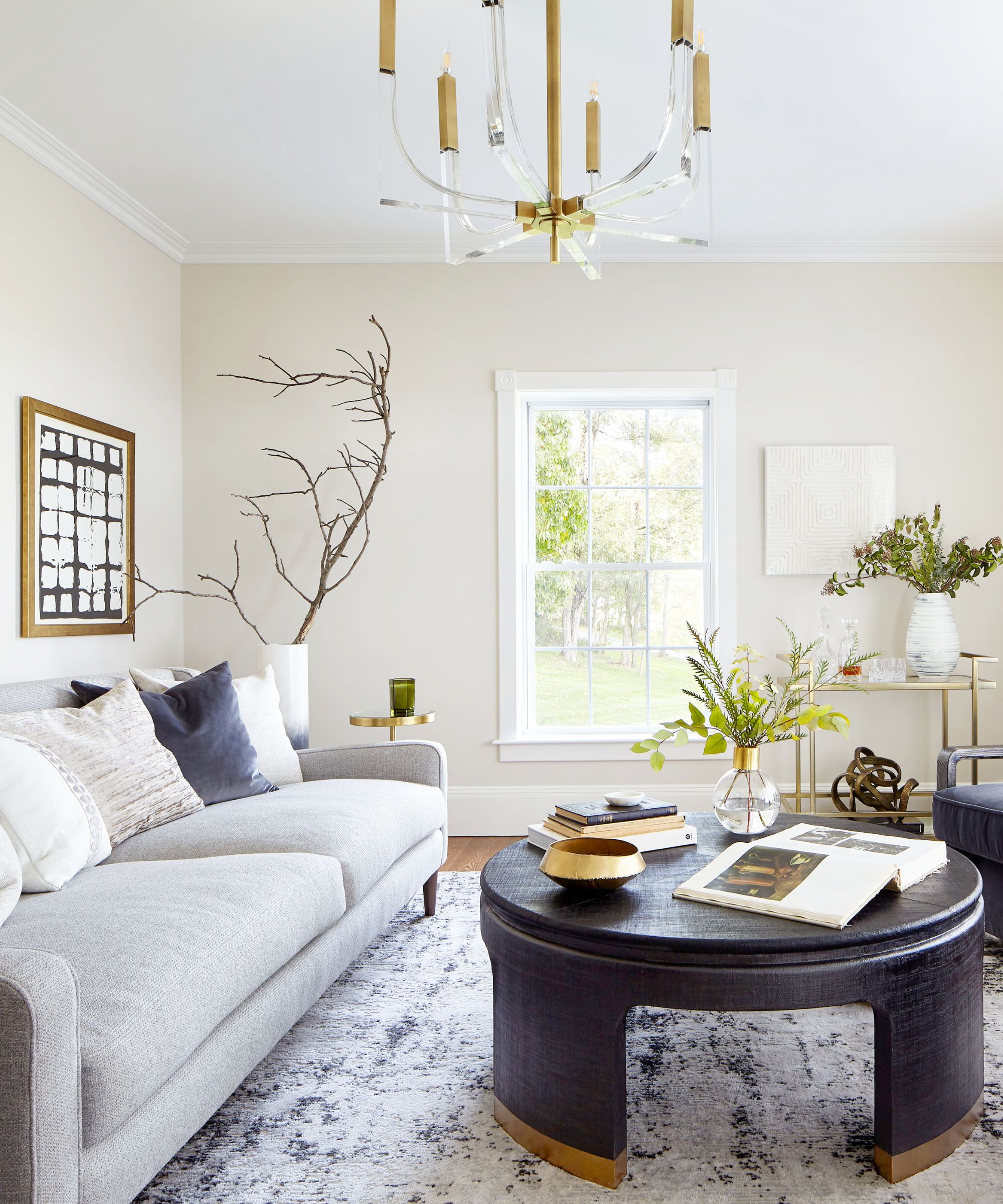What is modern interior design? Get in the know with advice from experts
Modern interior design created a break from the past. Discover its origins, designs, color palette, and materials


The question of what is modern interior design has a more precise answer than you might suppose. It’s part of a historic aesthetic movement that transformed art and architecture as well as interiors, but one whose influence on our homes continues.
Modern interior design is often taken as, or used as, a synonym for contemporary interior design, but the two are different. Modern interior design arose out of its period, and is a distinct interior design style.
In this guide, we examine what modern interior design is, the origins of the style, what typifies it, and how it might be expressed in a 21st-century home.
What is modern interior design?
Modern interior design has a characteristic look. ‘It is a style which embraces minimalism, pure lines and one or a few colors,’ explains interior designer Artem Kropovinsky.
It has left an enduring legacy. ‘Modern interior design, and modern design in general, is a historically specific movement that radically differed in how people viewed their art, their spaces, their clothing, and lives in general from earlier periods,’ says Gregor Bugel, co-founder of architectural and interior design practice Handwerk Art & Design.
‘Since its inception, it has left its mark on all following design movements, and it is directly influential in what we create and do in our everyday lives to this day.’

Gregor Bugel is co-founder of architectural and interior design practice Handwerk Art & Design, a multi-disciplined design practice. He brings experience from the field of fine arts, museology, and architecture. He served as exhibitions coordinator and graphic designer for the Studio-X Global Network at the Columbia University Graduate School of Architecture, Planning, and Preservation, and currently teaches an interior design studio at the Pratt Institute School of Design in Brooklyn, NY.
Origins of modern interior design

While a firm date for the beginnings of modern interior design is disputed, there is general agreement on its period.
Design expertise in your inbox – from inspiring decorating ideas and beautiful celebrity homes to practical gardening advice and shopping round-ups.
‘Art and architectural historians have characterized the early to mid-20th century as the modernist movement, a period characterized by work that broke with tradition,’ explains David Thompson, AIA, principal of Assembledge+.
‘Creatives were interested in the new machine age, which emphasized functionality, minimalist style and innovation as opposed to ornamentation. Natural materials like woods, textiles and ceramics were being abstracted and experimented with to create sleek forms that mirrored the needs of a modern lifestyle.’
Modern interior design’s value of clean lines and natural light was made possible through innovations. ‘New construction and material technologies allowed for this by enabling more open floor plans, larger windows, and sleeker and lighter construction in general,’ says Gregor Bugel.
‘As construction methods gave architects, artists, and designers new tools and methods, the built world became more of a platform for interpersonal interaction and expression than a focal point itself. The emerging style that we call modern design, though aesthetically and materially recognizable, truly focused on the human inhabitants, and put them at the center of the built spaces that the movement created.’

David is the founder and principal at Assembledge+. Prior to starting the firm he significantly contributed to the success of various esteemed Los Angeles architectural firms. He held key positions at Syndesis in Santa Monica and Lorcan O’Herlihy Architects in Culver City. His design philosophy centers on the creation of enduring environments that are both responsible and sustainable.
Characteristics of modern interior design

Modern interior design is distinguished by several characteristics. ‘The layout of a modern design home is typically an open concept with strategically placed interior walls or pillars that are more utilitarian than aesthetic,’ says Luis Carmona, owner of VERDE Interior Design. ‘They tend to be structural and not there to simply divide the room in half.
‘Natural light is a key element of modern homes as modern design maximizes the amount of natural light that enters the home,’ he continues. ‘Whether it is large floor-to-ceiling windows, skylights, or atriums, natural light is a large contributor to the aesthetic of a modern home.
‘The palette tends to use a more muted color scheme, using a lot of colors found in nature: whites, taupes and shades of wood. You'll find the use of a lot of natural surfaces in modern design like wood and stone, creating clean lines along the space.’
Crucially, modern interior design, does not feature unnecessary detail. ‘Tools and processes with specific functions stripped away the ornamentation and decadence of earlier times and focused on the task at hand,’ explains Gregor Bugel.
‘Chairs and light fixtures that were more streamlined and simpler but just as effective as earlier styles soon led into the creation of entire spaces that could be called truly modern.’

Luis Carmona is the owner and lead designer at VERDE Interior Design. With almost two decades of experience in the creative space, he blends his many passions into one design studio, offering services to commercial and residential clients in both Houston and Dallas.
Reasons for choosing modern interior design

There are many reasons to be influenced by the characteristics of modern interior design in a home today.
‘People crave the warmth, texture, and playfulness of modern interior design in their homes today,’ says David Thompson. ‘It is a celebration of natural materials presented in authentic and innovative ways, showcasing well-defined forms and the allure of long, low-shaped furniture. The neutral color palette remains timeless, and the open and minimal layout invites a calmness into our living spaces.’
And welcoming in extra daylight is a worthy legacy. ‘Homes with an open concept take inspiration from modern design as well as homes designed to maximize the exposure of natural light,’ says Luis Carmona.
It can be adapted to take account of 21st-century developments and concerns. ‘The advancement of technology and importance of sustainability make a difference – hence modern interior designs need to retain the main concepts while incorporating smart home apps and eco-friendly materials,‘ recommends Artem Kropovinsky.
How to recreate modern interior designs

If you like the idea of bringing modern interior design to your home, focus on distilling your needs to basic elements, advises Gregor Bugel. ‘Some might call this minimalism, which is certainly related to modernism and indeed shares many of its core values, but the focus is always on the use of the space and not the look of the space,’ he says.
‘Is a room in your home going to be a gym? Then maybe a work desk with a computer does not belong there. Do you want to create a dining room for maximum conversation? Perhaps a television screen should be out of sight of the table then. In this way, the action to be executed in the space takes the controls of leading the design.’
Working with a professional interior designer to introduce a modern style can be valuable. ‘Modernist designers embraced the concept of the complete design, where every element of a space, from the structural expression to the subtle nuances of a bathroom faucet, was carefully thought out and balanced,’ says David Thompson.
‘The magic lies in seemingly minor details – a cabinet aligning perfectly with a floor pattern or the seamless transition between materials. These elements, though unassuming on their own, collectively create the overall impression of a space. The hallmark of a professional designer is the ability to see beyond individual choices with an acute awareness of the entire design, resulting in an end product that appears effortlessly elegant – a testament to a thoughtfully curated space that contributes to the well-being of those who inhabit it.’
What’s the difference between contemporary and modern?
Contemporary and modern are often used as interchangeable terms, but they have different meanings. ‘Contemporary style emerged in the wake of the modern movement and is rooted in the present; constantly evolving, riding the waves of social, political and economic trends,’ says David Thompson, AIA, principal of Assembledge+. ‘While it is difficult to peg down particular aesthetic characteristics, contemporary design tends to embrace a more minimalistic, severe and monochromatic approach compared to its modern counterpart.’
Discovering your interior design style allows experimentation with trends, but many of us have been influenced by modern interior design in many ways. ‘Modern design values clean lines, natural light, authenticity in materials, and a general interest in allowing its inhabitants to fully express themselves in a given space,’ says Gregor Bugel.

Sarah is a freelance journalist and editor. Previously executive editor of Ideal Home, she’s specialized in interiors, property and gardens for over 20 years, and covers interior design, house design, gardens, and cleaning and organizing a home for Homes & Gardens. She’s written for websites, including Houzz, Channel 4’s flagship website, 4Homes, and Future’s T3; national newspapers, including The Guardian; and magazines including Future’s Country Homes & Interiors, Homebuilding & Renovating, Period Living, and Style at Home, as well as House Beautiful, Good Homes, Grand Designs, Homes & Antiques, LandLove and The English Home among others. It’s no big surprise that she likes to put what she writes about into practice, and is a serial house renovator.